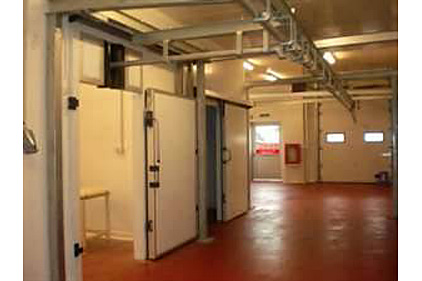Exploring the Essence of Modern Restaurant Design
In the ever-evolving culinary landscape, modern restaurant design plays a pivotal role in shaping the dining experience. From sleek interiors to innovative layouts, contemporary culinary spaces offer a feast for the senses, blending aesthetics with functionality to create memorable dining destinations.
Innovative Layouts and Spatial Planning
At the heart of modern restaurant design lies innovative layouts and spatial planning. Designers meticulously craft the flow of space to optimize the dining experience, ensuring seamless transitions between different areas. Open kitchens, communal dining spaces, and flexible seating arrangements are some of the key features that define contemporary restaurant layouts, fostering a sense of conviviality and connection among diners.
Sensory Ambiance and Atmosphere
Creating the right ambiance and atmosphere is essential in modern restaurant design, as it sets the stage for the culinary journey ahead. Lighting, music, and decor elements are carefully curated to evoke a specific mood or emotion, whether it be casual and cozy or upscale and elegant. From intimate candlelit tables to vibrant bar areas, each space within the restaurant contributes to the overall sensory experience, enhancing diners’ enjoyment of the meal.
Integration of Technology and Innovation
Technology plays an increasingly prominent role in modern restaurant design, revolutionizing everything from the ordering process to the dining environment itself. Digital menus, interactive displays, and mobile ordering systems streamline operations and enhance convenience for both guests and staff. Additionally, innovative features such as smart lighting, soundscapes, and temperature control systems elevate the dining experience, creating a more immersive and enjoyable atmosphere.
Culinary Theater and Open Kitchens
The concept of culinary theater has become a hallmark of modern restaurant design, with open kitchens taking center stage as chefs showcase their skills and creativity. Diners are invited to witness the culinary process firsthand, engaging all their senses as they observe, smell, and taste the dishes being prepared. This interactive dining experience adds an element of excitement and authenticity to the meal, fostering a deeper connection between chefs and diners.
Sustainable Practices and Eco-Friendly Design
In response to growing environmental concerns, modern restaurant design is increasingly incorporating sustainable practices and eco-friendly design principles. From energy-efficient appliances to eco-friendly materials and waste management systems, restaurants are taking proactive steps to minimize their carbon footprint and promote sustainability. Green walls, rooftop gardens, and composting programs are just some of the innovative solutions being implemented to create more environmentally conscious culinary spaces.
Community Engagement and Social Responsibility
Modern restaurants are not just places to eat; they are hubs of community engagement and social responsibility. Many establishments host events, workshops, and fundraisers to engage with the local community and support charitable causes. Additionally, restaurants are increasingly sourcing ingredients from local farmers and producers, promoting a farm-to-table ethos that celebrates regional cuisine and supports small-scale agriculture.
Artistic Expression and Creative Collaboration
Artistic expression and creative collaboration are integral components of modern restaurant design, as establishments seek to create unique and memorable dining experiences that resonate with guests. From custom artwork and installations to collaborations with local artists and designers, restaurants are leveraging the power of creativity to differentiate themselves in a competitive market. These artistic elements add depth and personality to the dining space, enriching the overall guest experience.
Cultural Influences and Global Inspiration
Modern restaurant design draws inspiration from a diverse array of cultural influences and global cuisines, reflecting the interconnectedness of the culinary world. Whether it’s a Japanese izakaya, a Spanish tapas bar, or a French bistro, restaurants often pay homage to their cultural roots while incorporating contemporary design elements and trends. This fusion of tradition and innovation creates dynamic and vibrant dining spaces that celebrate culinary diversity and cultural exchange.
Customer-Centric Design and Personalized Experiences
Customer-centric design is paramount in modern restaurant design, as establishments strive to cater to the needs and preferences of discerning diners. Personalized experiences, from customizable menus to tailored seating arrangements, ensure that each guest feels valued and appreciated. Additionally, restaurants leverage data analytics and customer feedback to continually refine and improve the dining experience, fostering loyalty and repeat business.
**Sustainability, innovation, and community engagement are all integral to contemporary restaurant design, creating dynamic spaces that celebrate culinary creativity and cultural diversity. By embracing modern design principles and trends, restaurants can create memorable dining experiences that delight the senses and inspire the palate. Read more about modern restaurant design



